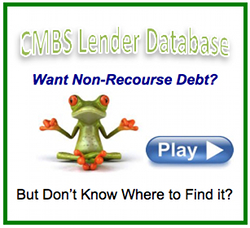Warning: Use of undefined constant user_level - assumed 'user_level' (this will throw an Error in a future version of PHP) in /home/zzgspc5zic0z/domains/findthecapital.com/html/wp-content/plugins/ultimate-google-analytics/ultimate_ga.php on line 524
Warning: Use of undefined constant user_level - assumed 'user_level' (this will throw an Error in a future version of PHP) in /home/zzgspc5zic0z/domains/findthecapital.com/html/wp-content/plugins/ultimate-google-analytics/ultimate_ga.php on line 524
Article by, Brent Virkus All indications are that the residential real estate market hit bottom in 2011 and has started a significant recovery. This offers a great opportunity to make solid investment returns while limiting risk through flipping houses. In our opinion we’ve got about a 3-5 year period of time from today to take advantage of this once in a generation opportunity. Most of your best opportunities will exist in the foreclosure market through bank owned properties, Fannie Mae and others. The good news is there is still a significant volume of foreclosures headed our way so if you are disciplined in the way you go about things, you have a great opportunity ahead of you! Find the Capital is very active in helping investors get into the real estate market. To help you take advantage of this once in a lifetime event, we thought we would highlight our Seven Keys to Flipping Houses: 1. You make your money on the Buy not the Sell. This is probably the most important thing to understand about flipping houses. Make sure you completely understand the market you are investing in and what comparable properties are trading for. So rule number one is to always buy at a significant discount to market. This way you are not banking on the market needing to rise to make your money. Be patient. The right opportunities will come your way if you are disciplined. 2. Make sure you have the ability to “Add Value” to the home you purchase. The great news is most foreclosure homes or homes trading at a significant discount to market are vacant and in need of moderate to significant renovation. Focus most of your energy on the kitchen, bathrooms and master bedroom. These are the areas that ultimately “Sell” the house. 3. Properly underwrite your Purchase Price When establishing your purchase price it is imperative to properly underwrite the deal and your potential profit. We do this by starting with what we think we can ultimately sell the house for once it is completely renovated or repositioned. We then take this number and multiply it by what profit margin we are looking to make, which is typically 20%. Then...
Warning: Use of undefined constant user_level - assumed 'user_level' (this will throw an Error in a future version of PHP) in /home/zzgspc5zic0z/domains/findthecapital.com/html/wp-content/plugins/ultimate-google-analytics/ultimate_ga.php on line 524
Warning: Use of undefined constant user_level - assumed 'user_level' (this will throw an Error in a future version of PHP) in /home/zzgspc5zic0z/domains/findthecapital.com/html/wp-content/plugins/ultimate-google-analytics/ultimate_ga.php on line 524
Article by Brent Virkus Senior Managing Director of Find the Capital and CEO of TRiTON Capital Advisory We are constantly getting the same question from our clients and followers… What exactly does “hashtag” this and “hashtag” that mean exactly? To help clear up this whole “hashtag” question/curiosity, we found a article that sheds some light on the subject. The article was written by Tim Mcmullen. Tim is founder and executive creative director of Redpepper. We hope you enjoy… ___________________________ Whether they entertain, confuse or annoy you (or some combination of the three), hashtags do one thing 100% of the time: they make ordinary social media posts clickable. And that means two very important things for brands: your original content becomes searchable, and you have a new opportunity engage your social audience every single time you post. On planet Twitter, hashtags create instant real-time news feeds out of thin air, from first aid and safety responses after #SuperStormSandy to waiting for the #RoyalBaby to make his appearance. Instagram hashtags solicit, through a trendy vintage filter, spontaneous visual testimonials about your brand or event. Facebook, unfashionably late to the hashtag party, is a prime spot for using hashtags as a rallying cry for your cause – even if your cause is a Midnight Madness sale on mattresses. Regardless of the social platform, every hashtag you use should have a job, and you should know what that job is before you hit “post.” Six Ways to Use a Hashtag: 1. To Find New Fans. Your audience clicks on a hashtag for one simple reason: to find more content related to what they’ve just seen. If you want to be there when they search, it’s time to get familiar with the pound sign. That means using your own custom tags to serve up brand-specific collections of posts (think #BobsAwesomeCoffee), and putting some SEO-like strategies in place (think #BrooklynCoffeeShop or #FortGreene) to make sure your posts – and your fans’ posts—show up when someone gets curious and clicks. 2. To Rally Support. If there’s one thing social media users love, it’s showing their support for a cause. When big-box brand Target teamed up with do-good organization FeedUSA, shoppers were more than happy to tell...
Warning: Use of undefined constant user_level - assumed 'user_level' (this will throw an Error in a future version of PHP) in /home/zzgspc5zic0z/domains/findthecapital.com/html/wp-content/plugins/ultimate-google-analytics/ultimate_ga.php on line 524
Warning: Use of undefined constant user_level - assumed 'user_level' (this will throw an Error in a future version of PHP) in /home/zzgspc5zic0z/domains/findthecapital.com/html/wp-content/plugins/ultimate-google-analytics/ultimate_ga.php on line 524
Article by, Brent Virkus of Find the Capital and TRiTON Capital Advisory Find the Capital is known for two distinct things…Our Industry Leading Marketing Matrix System and Supplying our followers with Capital to expand and grow their business. We’ve been getting a lot of questions regarding our Retail Capital Financing program and how it compares to other types of business funding. So we thought we would provide you a simple chart outlining exactly how our Retail Capital Financing compares to other sources of funding: What Exactly is a Merchant Cash Advance Program? A merchant cash advance is an alternative source of financing for small businesses who can’t get a traditional bank loan. If a business can’t get a bank loan, a merchant case advance is a viable alternative if a business has a cash flow problem and an immediate need for cash. Banks have been tight with their money since the beginning of the credit crisis in late 2007. As time as passed during the recession, credit has just gotten tighter. Recently, the Obama Administration strongly urged both large and small… Click here to read on! Looking for Capital? Submit Capital...
Warning: Use of undefined constant user_level - assumed 'user_level' (this will throw an Error in a future version of PHP) in /home/zzgspc5zic0z/domains/findthecapital.com/html/wp-content/plugins/ultimate-google-analytics/ultimate_ga.php on line 524
Warning: Use of undefined constant user_level - assumed 'user_level' (this will throw an Error in a future version of PHP) in /home/zzgspc5zic0z/domains/findthecapital.com/html/wp-content/plugins/ultimate-google-analytics/ultimate_ga.php on line 524
Article by, Brent Virkus of Find the Capital and TRiTON Capital Advisory An effective marketing campaign needs three components to work together as one. We call this the Marketing Matrix. When the right components are in place and properly aligned, the campaign produces a predictable, repeatable, and replenish-able flow of qualified leads with relatively little continuous effort. Clear Vision Start by identifying the Clear Vision that drives your marketing campaign. Use your Clear Vision to make decisions about what Platform you need, what offer to make, what language and images to use in your marketing, and who to partner with. The more compelling and consistent the Clear Vision, the easier it will be to turn your crank. The most useful stories are already being told by your customers through their actions. Your job is to detect and articulate your customer’s story, not to create a brand new one. Your story should be easily relatable, inspiring, and lead the customer to trust you, believe in themselves, and feel an urgent need to buy your product or service to help them solve their problem, need, desire or opportunity. The Platform All marketing campaign must include at least one asset from each category: Lead Sources: Communities (Professional associations, Networking groups) Search (PPC, Organic, Display, YouTube, Kindle) Social Media (LinkedIn, Twitter, Facebook) JV Partners (Teleseminars, Email newsletters, Packaged products) Offline Advertising (Television, Radio, Print) PR (News stories, Guest blog posts, TV appearances) Lead Capture: Manual (Business cards, “Hey, give me your number”) Web Form (Honey pot, Event RSVP, Teleseminar RSVP, List purchase) Social Media (LinkedIn, Twitter, Facebook) Lead Nurture: Auto-Responder (Useful content, Coupons, Statistics, Reports, Surveys) Breaking Bread (Hosted dinner parties, Informal lunches, 1:1 Advice) Free Product (Freemium Software, Assessments, Trial periods) Sales Conversion: 1:1 Sales (Door-To-Door, Telephone Sales, Enterprise Sales) 1:Many Sales (Webinars, Selling From the Stage, Direct Response) Website Sales (Shopping Cart, Sales Letter) Physical POS (Retail, Vending Machine, Box Office) Channel Sales (Distributors, Aggregators, Systems Integrators, Partners) Call Centers (Inbound, Outbound) Fulfillment: Personal Service (1:1 Meetings, Phone Meetings, Personalized emails) Professional Service (Created works delivered to customer) Seminar (teleseminar, Q+A call, Workshop, Training) SAAS (Platform, Online Community, Hosted Application) Digital Product (Information Product, Music, Software, Mobile app) Manufactured Product (OEM...
Warning: Use of undefined constant user_level - assumed 'user_level' (this will throw an Error in a future version of PHP) in /home/zzgspc5zic0z/domains/findthecapital.com/html/wp-content/plugins/ultimate-google-analytics/ultimate_ga.php on line 524
Warning: Use of undefined constant user_level - assumed 'user_level' (this will throw an Error in a future version of PHP) in /home/zzgspc5zic0z/domains/findthecapital.com/html/wp-content/plugins/ultimate-google-analytics/ultimate_ga.php on line 524
Article by, Brent Virkus of Find the Capital and TRiTON Capital Advisory Last week we wrote about the Top Ten Worst Business Decisions Ever. The response from our followers was incredible. This week I thought I would highlight the Top 5 Best Business Decisions Ever. According to Forbes Magazine they are as follows: Business leaders make thousands of decisions each year, and sometimes, a single decision can have a powerful far reaching impact. In the book,The Greatest Business Decisions of All Time, Verne Harnish explores those “black swan” decisions that brought great success at companies like Zappos, Intel, Tata, Toyota and many others. Below is Harnish’s personal list of the greatest business decisions of all time. #5 Greatest Decision—General Electric. Jack Welch’s decision to fully fund a first-in-class training center at Crotonville, led to the development of hundreds of great leaders who practiced the “GE Way”. #4 Greatest Decision—Samsung. Their decision to launch a sabbatical program that sends top talent all around the world continues to be the secret behind Samsung’s success as a global brand. #3 Greatest Decision—Wal-Mart. Sam Walton’s decision to hold Saturday morning, all-employee meetings led to a culture of rapid information and decision making, which in turn created one of the biggest companies in the world. #2 Greatest Decision—Apple. The board’s decision to bring back Steve Jobs, after firing him a decade earlier, led to amazing product innovation and to the creation of one of the most valuable companies in the world. #1 Greatest Decision—Ford. Henry Ford’s decision to double the wages of his workers enabled him to attract the talent he needed, and helped insure a class of worker who could afford the very products they were building. Let us know what do you think are the greatest business decisions in history… “How to Finish Your Business Plan in 1 Day or Less!“ Watch this FREE Presentation to Discover A Simply Business Plan “Short-Cut”…. ...
Warning: Use of undefined constant user_level - assumed 'user_level' (this will throw an Error in a future version of PHP) in /home/zzgspc5zic0z/domains/findthecapital.com/html/wp-content/plugins/ultimate-google-analytics/ultimate_ga.php on line 524
Warning: Use of undefined constant user_level - assumed 'user_level' (this will throw an Error in a future version of PHP) in /home/zzgspc5zic0z/domains/findthecapital.com/html/wp-content/plugins/ultimate-google-analytics/ultimate_ga.php on line 524
Article by, Brent Virkus of Find the Capital and TRiTON Capital Advisory Now that the economy seems to be getting better, we are getting a lot of questions from our clients about SBA financing for their small business and real estate investments. In this article, we thought we would give you a quick rundown on exactly what an SBA loan is and how it works. Whether you’re looking to expand your business, purchase or refurbish equipment, take on new real estate or refinance an existing mortgage or agreement, a small business administration (SBA) loan can achieve modified financing in order to help your company grow. An SBA loan has been the answer to many cash-flow issues that otherwise successful businesses have had. This business loan is guaranteed in part by the U.S. Small Business Administration and can offer certain small business-specific benefits which are not available with other types of loans. These loans can be used for a wide range of purposes and are often utilized in order to support owner-occupied commercial property, maintain or purchase new equipment, as working capital, for furniture or fixtures, with leasehold improvements, for debt refinancing and for start-up capital. Types of SBA Loans: SBA 7(a) Who is Eligible: SBA provides loans to businesses — not individuals — so the requirements of eligibility are based on aspects of the business, not the owners. As such, the key factors of eligibility are based on what the business does to receive its income, the character of its ownership and where the business operates. SBA generally does not specify what businesses are eligible. Rather, the agency outlines what businesses are not eligible. However, there are some universally applicable requirements. To be eligible for assistance, businesses must: Operate for profit Be small, as defined by SBA Be engaged in, or propose to do business in, the United States or its possessions Have reasonable invested equity Use alternative financial resources, including personal assets, before seeking financial assistance Be able to demonstrate a need for the loan proceeds Use the funds for a sound business purpose Not be delinquent on any existing debt obligations to the U.S. government Ineligible Businesses A business must be engaged in an activity SBA determines as...












